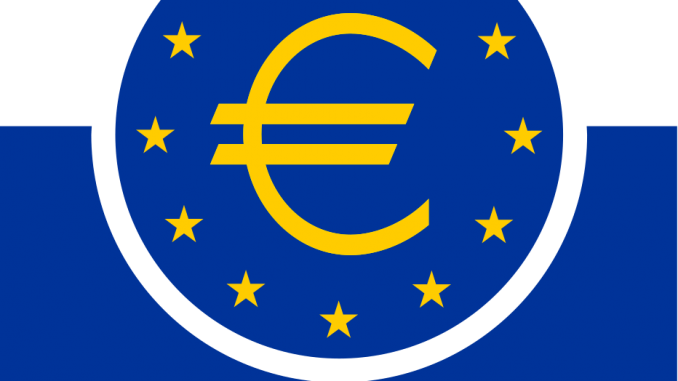
The Bank of England has warned that Europe’s financial system faces “potential risks” to its stability amid the current no-deal Brexit plan. Unsurprisingly, after the Bank of Canada left its overnight rate at 1.75%, the dollar rose against the Canadian dollar. These points to a slowdown in global economies as well as the Canadian economy.
The USD saw impressive gains against a basket of currencies last week, despite of the fairly weak session on Friday. The rise to a multi-year high was mainly due to the euro’s decline. Other major factors that contributed to the strength of the dollar were the weakness of the British pound and the Canadian dollar. The gains in the dollar, in turn, helped the Japanese yen and the Swiss franc. Central bank decisions are behind the strength of the dollar index.
European Central Bank
The euro has, without any doubts, the largest weight in the dollar index. The rally was fueled by the European Central Bank’s decision to stimulate bank lending in the euro area on Thursday, as well as delaying the timing of the rate hike for the first time.
“A new series of quarterly targeted longer-term refinancing operations (TLTRO-III) will be launched, starting in September 2019 and ending in March 2021,” the central bank said in a statement.
TLTROs are loans offered by the European Central Bank at cheap prices to banks in the euro area. The central bank’s decision comes at a time of growing concerns about growth in the Euro Zone. European Central Bank President Mario Draghi declared that these new measures were taken amid growing external risk factors.
“The persistence of uncertainties related to geopolitical factors, the threat of protectionism and vulnerabilities in emerging markets appears to be leaving marks on economic sentiment,” Draghi told reporters on Thursday.
The European Central Bank also kept interest rates unchanged on Thursday. The ECB said earlier that rates would remain at these levels until the end of the summer, but on Thursday it declared it now expects key interest rates to remain at their current levels at least until the end of 2019.
Bank of England
The Bank of England made some comments last week, addressing the FPC meeting on February 26. The Bank has warned that Europe’s financial system faces the “potential risks” of a no-deal Brexit. With only 24 days remaining until Britain is set to leave the EU, the Bank of England said companies and families in Britain and the European Union were at risk.
The BOE also warned that “some disruption to cross-border services is possible and, in the absence of other actions by EU authorities some potential risks to financial stability remain.” Also, the Bank of England said on Tuesday in the upcoming months, it would begin to increase lending facilities for commercial banks.
Bank of Canada
The US dollar also saw some gains against the Canadian dollar, after the Bank of Canada left its overnight rate at 1.75% as expected, pointing to a slowdown in global economies.
Recent data indicates that the slowdown in the global economy was more clear and wide than the bank’s forecast in the monetary policy report in January, the Bank of Canada said in a statement announcing the interest rate hold. While the sources of moderation appear to be multiple, trade tensions and uncertainty weigh on economic activity. It is difficult to dismantle these confidence effects from other negative factors, but it is clear that the global economic outlook will affect the resolution of trade disputes.
The USD / CAD pair also rose, as investors reduced the possibility of further rate hikes later this year. In 2018 the central bank suggested that it would be aggressive in raising the rate throughout 2019, but it now seems that the bank will not change the rates again until the fall.




Be the first to comment